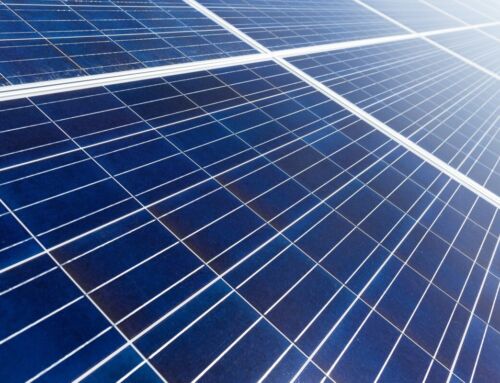Exploring the Different Types of Solar Energy Systems
Harnessing the power of the sun is no longer just a futuristic dream—it’s a present-day reality with tangible benefits. However, with various
types of solar energy systems available, choosing the right one can be overwhelming. Fear not, as we promise to demystify these options, making your journey to sustainable energy simpler and more informed.
Photovoltaic (PV) Solar Panels
Photovoltaic solar panels are the most common type of solar energy system. They convert sunlight directly into electricity using semiconductor materials.
Benefits include:
- Versatility: Suitable for residential, commercial, and industrial applications.
- Scalability: Easily expandable by adding more panels.
- Low Maintenance: Requires minimal upkeep once installed.
Solar Thermal Systems
Solar thermal systems capture sunlight to generate heat, which can be used for water heating or space heating.
Key features include:
- Efficiency: Highly effective in sunny climates.
- Applications: Ideal for heating swimming pools and domestic water.
- Cost-Effectiveness: Often cheaper than PV systems for heating purposes.
Concentrated Solar Power (CSP)
Concentrated Solar Power systems use mirrors or lenses to focus sunlight onto a small area, generating heat to produce electricity.
Advantages include:
- Large-Scale Production: Suitable for utility-scale power generation.
- Energy Storage: Can store heat for electricity generation even when the sun isn’t shining.
By understanding the different
types of solar energy systems, you can make an informed decision that aligns with your energy needs and environmental goals. Transitioning to solar power not only reduces your carbon footprint but also offers long-term savings and energy independence.
How Do Photovoltaic Solar Panels Work?
When it comes to harnessing the sun’s energy, understanding the
Types Of Solar technology available is crucial. Among these, photovoltaic (PV) solar panels stand out as a popular choice. But how exactly do they work? Let’s delve into the fascinating world of PV solar panels and discover how they convert sunlight into usable electricity.
Photovoltaic solar panels operate on a simple yet ingenious principle: converting sunlight directly into electricity. This process begins when sunlight hits the solar cells, typically made of silicon, within the panel. The energy from the sunlight excites electrons in the silicon, creating an electric current. This current is then captured and directed for use in homes or businesses.
The Photovoltaic Effect
- Sunlight Absorption: Solar cells absorb photons from sunlight.
- Electron Excitation: Absorbed photons energize electrons, causing them to move.
- Electric Current Generation: The movement of electrons generates an electric current.
Once the electric current is generated, it flows through an inverter, which converts the direct current (DC) into alternating current (AC). This conversion is essential because most household appliances and electrical systems operate on AC. Thus, PV solar panels provide a seamless way to power your home with renewable energy, reducing reliance on fossil fuels and lowering electricity bills.
By understanding how photovoltaic solar panels work, you can make informed decisions about which
Types Of Solar technology best suits your needs. Whether you’re looking to reduce your carbon footprint or save on energy costs, PV solar panels offer a reliable and efficient solution.
The Benefits of Concentrated Solar Power (CSP)
When it comes to harnessing the sun’s energy, the
Types Of Solar technologies available today offer diverse solutions. However, one type stands out for its unique approach and potential: Concentrated Solar Power (CSP). The problem many face is finding a sustainable and efficient way to generate electricity. CSP promises to address this by using mirrors or lenses to concentrate a large area of sunlight, or solar thermal energy, onto a small area, thus generating heat that can be converted into electricity.
How CSP Works
- Concentration of Sunlight: CSP systems use mirrors or lenses to focus sunlight onto a receiver.
- Heat Generation: The concentrated light is converted into heat, which drives a heat engine connected to an electrical power generator.
- Energy Storage: CSP can store thermal energy for use during cloudy periods or at night, providing a reliable power supply.
Advantages of CSP
- Efficiency: CSP systems can achieve higher efficiencies than traditional photovoltaic systems.
- Scalability: They are suitable for large-scale power plants, making them ideal for utility-scale projects.
- Sustainability: CSP contributes to reducing carbon emissions and reliance on fossil fuels.
In conclusion, among the various
Types Of Solar technologies, CSP offers a promising solution for sustainable and efficient energy production. Its ability to store energy and provide power even when the sun isn’t shining makes it a versatile and reliable choice for the future of renewable energy.
What Are Solar Thermal Systems and How Do They Function?
When it comes to exploring the
Types Of Solar energy systems, solar thermal systems often capture attention due to their efficiency and versatility. The problem many face is understanding how these systems work and their benefits. This section promises to unravel the mystery behind solar thermal systems, providing clarity and insight into their operation and advantages.
Solar thermal systems are designed to harness the sun’s energy to generate heat, which can be used for various applications such as heating water, spaces, or even generating electricity. Unlike photovoltaic systems that convert sunlight directly into electricity, solar thermal systems focus on capturing and utilizing heat.

Thinking about solar energy? See how it can lower your bills and elevate your home’s efficiency. Get Your Free Estimate at NewSolar Quotes
How Solar Thermal Systems Work
- Solar Collectors: These are the heart of the system, absorbing sunlight and converting it into heat. They can be flat-plate collectors or evacuated tube collectors, each with unique efficiencies and applications.
- Heat Transfer Fluid: This fluid circulates through the collectors, absorbing the heat and transporting it to a storage system or directly to the application area.
- Storage Tanks: These tanks store the heated fluid, ensuring a steady supply of heat even when the sun isn’t shining.
Benefits of Solar Thermal Systems
- Efficiency: Solar thermal systems are highly efficient in converting sunlight into usable heat, making them ideal for heating applications.
- Cost-Effective: Over time, these systems can significantly reduce energy bills, offering a sustainable and economical solution.
- Versatility: They can be used in residential, commercial, and industrial settings, providing flexibility in application.
Comparing Off-Grid and Grid-Tied Solar Solutions
In the world of renewable energy, understanding the
Types Of Solar solutions available is crucial for making informed decisions. Whether you’re looking to reduce your carbon footprint or cut down on electricity bills, solar power offers a promising solution. However, the choice between off-grid and grid-tied systems can be daunting. Let’s explore these options to help you decide which fits your needs best.
Off-Grid Solar Solutions
Off-grid solar systems are designed to operate independently of the utility grid. They are ideal for remote locations where grid access is limited or unavailable. These systems typically include solar panels, a battery storage system, and an inverter. The main advantage is energy independence, ensuring power availability even during grid outages. However, they require a significant upfront investment and careful management of energy consumption.
Grid-Tied Solar Solutions
On the other hand, grid-tied solar systems are connected to the local utility grid. They allow homeowners to use solar power during the day and draw from the grid at night or during cloudy days. These systems are generally more affordable and easier to install. Additionally, they offer the benefit of net metering, where excess energy generated can be fed back into the grid, potentially reducing electricity bills. However, they do not provide power during grid outages unless paired with a battery backup system.
Choosing between these
Types Of Solar solutions depends on your specific needs, location, and budget. Off-grid systems offer autonomy, while grid-tied systems provide cost-effectiveness and convenience. Consider your energy goals and consult with a solar expert to determine the best fit for your situation.
Innovative Hybrid Solar Systems: Combining Technologies for Efficiency
In the ever-evolving landscape of renewable energy, the
Types Of Solar systems available today are more diverse and innovative than ever before. As the world seeks sustainable solutions, one problem persists: how to maximize energy efficiency while minimizing costs. Enter hybrid solar systems, a promising solution that combines the best of both worlds—solar power and other energy sources—to deliver superior efficiency and reliability.
Hybrid solar systems ingeniously integrate photovoltaic (PV) panels with other energy technologies, such as wind turbines or traditional generators. This combination ensures a consistent power supply, even when sunlight is scarce. By harnessing multiple energy sources, hybrid systems offer a reliable and efficient solution to the limitations of traditional solar setups.
Key Components of Hybrid Solar Systems
- Photovoltaic Panels: Capture sunlight and convert it into electricity.
- Battery Storage: Stores excess energy for use during cloudy days or nighttime.
- Backup Generators: Provide additional power when needed, ensuring uninterrupted energy supply.
The benefits of hybrid solar systems extend beyond just energy efficiency. They also offer flexibility in installation and scalability, making them suitable for a wide range of applications—from residential homes to large-scale industrial facilities. As technology advances, these systems continue to evolve, offering even more innovative solutions to meet the growing demand for sustainable energy.
How NewSolarQuotes Can Help You Choose the Right Solar Type
Are you overwhelmed by the different types of solar options available? You’re not alone. With the growing demand for renewable energy, choosing the right solar type can be daunting. But don’t worry, NewSolarQuotes is here to guide you through the process, ensuring you make an informed decision that suits your needs.
Understanding the Types of Solar
When it comes to solar energy, there are several types to consider, each with its unique benefits:
- Photovoltaic (PV) Solar Panels: These are the most common and convert sunlight directly into electricity.
- Solar Thermal Systems: Ideal for heating water, these systems capture sunlight to generate thermal energy.
- Concentrated Solar Power (CSP): Used mainly in large-scale applications, CSP systems use mirrors to focus sunlight into a small area to produce steam and drive turbines.
Factors to Consider
Choosing the right solar type involves evaluating several factors:
- Energy Needs: Determine your household or business energy consumption.
- Budget: Consider the initial investment and long-term savings.
- Space Availability: Assess the space you have for solar installations.
NewSolarQuotes offers expert advice and tools to help you weigh these factors effectively, ensuring you select the most suitable solar type for your situation.
The Future of Solar: Emerging Technologies and Trends
The world is abuzz with the potential of solar energy, and for good reason. As we face the pressing issue of climate change, the demand for sustainable energy solutions is more critical than ever. Solar power, with its promise of clean and renewable energy, stands at the forefront of this revolution. But what are the types of solar technologies leading us into the future? Let’s explore the emerging trends that are reshaping the solar landscape.
Photovoltaic Innovations
Photovoltaic (PV) technology is evolving rapidly, with new advancements making solar panels more efficient and affordable.
Perovskite solar cells are one such innovation, offering a cheaper and more flexible alternative to traditional silicon-based panels. These cells can be integrated into various surfaces, expanding the potential for solar energy capture. Additionally,
bifacial solar panels capture sunlight from both sides, increasing energy output without requiring additional space.
Concentrated Solar Power (CSP)
While PV technology captures the spotlight, Concentrated Solar Power (CSP) is also making strides. CSP systems use mirrors or lenses to concentrate sunlight onto a small area, generating heat that drives a turbine to produce electricity. Recent advancements in
thermal storage allow CSP systems to store energy for use when the sun isn’t shining, providing a reliable power source around the clock.
Building-Integrated Photovoltaics (BIPV)
The integration of solar technology into building materials is another exciting trend.
Building-Integrated Photovoltaics (BIPV) incorporate solar cells into roofs, facades, and windows, turning entire structures into energy generators. This approach not only reduces the need for additional land but also enhances the aesthetic appeal of solar installations, making them more attractive to homeowners and businesses alike.
As these types of solar technologies continue to evolve, they promise a future where solar energy is more accessible, efficient, and integrated into our daily lives. By embracing these innovations, we can look forward to a cleaner, more sustainable world powered by the sun.
Switch to solar and start saving now! Don’t miss out on a cleaner, cost-effective energy solution. Schedule Your Free Consultation at NewSolar Quotes
Discover more ways to save with solar! Visit New Solar Quote and see the potential for your home. 





